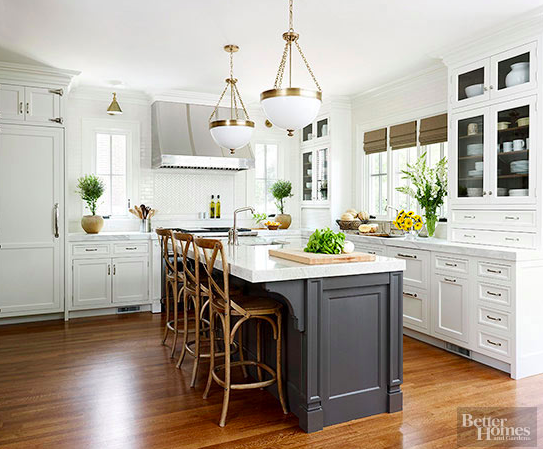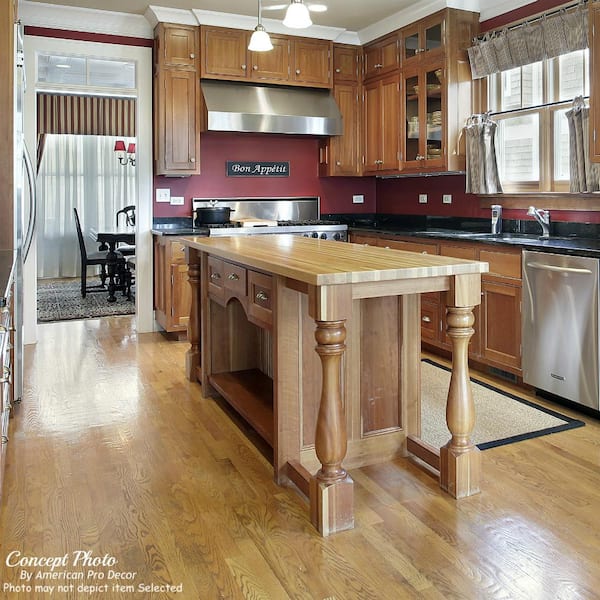A Guide to Picking the Suitable Kitchen Area Island for Your Home
Understanding your kitchen area's spatial characteristics is the initial step, making certain that the island fits perfectly without interfering with the circulation. The choice of coatings and materials also plays a crucial role in balancing the island with your cooking area's overall design.
Examining Your Space
Before choosing a cooking area island, it is vital to thoroughly assess your space to guarantee the enhancement will be both useful and aesthetically pleasing. Begin by measuring the available area, including the width, size, and height of the kitchen. Precise dimensions are vital to stay clear of acquiring an island that bewilders the area or one that is overmuch little.
Take into consideration the existing layout and how the island will integrate with the existing traffic flow. A well-placed island ought to not hamper or obstruct pathways access to vital home appliances, such as the sink, fridge, and stove. Leave sufficient clearance room-- commonly around 36 to 48 inches on all sides-- to enable for comfy movement and workspace effectiveness.
Following, assess the all-natural light and sightlines within your kitchen. An island that obstructs a home window or disrupts aesthetic cohesion can make the space feel confined and dark. Consider how the island's positioning will impact lights and exposure, guaranteeing it enhances instead of interferes with the kitchen area's setting.
Figuring Out the Purpose
Figuring out the objective of your kitchen area island is a vital step in ensuring it meets your details requirements and choices. Prior to delving right into design or dimension considerations, it is necessary to clarify what main feature the island will offer in your kitchen. Will it be a central center for meal prep work, a casual dining location, or possibly an added storage option?
For those who enjoy cooking, incorporating home appliances such as a cooktop or sink could be essential. Additionally, adequate counter space for mixing and chopping, along with obtainable storage for kitchen devices and components, can transform the island right into an efficient workstation. On the other hand, if the island is planned to offer or promote social communications as a dining location, seating plans come to be extremely important. In this instance, ensuring enough legroom and area for comfy eating experiences is critical.

Choosing the Right Dimension
Picking the right size for your kitchen area island is an equilibrium of functionality and area optimization. A perfect kitchen island should provide ample work area while guaranteeing that movement around the cooking area continues to be unobstructed. Begin by determining your kitchen space; a minimal clearance of 36 to 42 inches around the island is essential to permit comfortable activity and availability.
The dimensions of the island should show its intended usage. If the island will serve mainly as a prep location, a size of 24 to 36 inches might be sufficient. Nonetheless, if it is to fit seating, you need to consider a bigger size, typically measuring at least 48 inches in width. Islands committed to sinks or devices may need additional area to house these features adequately.

Finally, make sure that the island's dimension matches the total cooking area format, staying clear of any overwhelming presence that might detract from the cooking area's visual and energy - kitchen island legs. Mindful preparation and specific measurements will assist you achieve a reliable and unified kitchen area environment
Choosing Products and Finishes
After determining the proper dimension for your kitchen island, the next action involves selecting ideal materials and coatings. The choice of products significantly affects both the aesthetic charm and functionality of your cooking area island. Popular materials for countertops include granite, quartz, and butcher block, each offering unique benefits. Granite, known for its durability and classic elegance, is extremely immune to scratches and heat. Quartz, a crafted rock, offers a non-porous surface area that resists germs and discolorations. Butcher block, made from hardwood, adds a cozy, rustic appeal and is perfect for food preparation.
Along with the kitchen counter, think about the products for the island base. Solid wood provides a timeless, tough look, while stainless-steel supplies a sleek, modern look and is easy to clean. Painted finishes can introduce a splash of color, with choices ranging from low-key pastels to strong, lively hues.
Pay focus to the longevity of coatings, specifically in high-traffic locations, to maintain the island's look over time. Picking the best materials and coatings will certainly improve both the performance and visual appeal of your kitchen area island.
Including Practical Functions
Incorporating useful functions right into your kitchen island can dramatically improve its energy and convenience, changing it right into a versatile focal i thought about this point of your kitchen. One essential function to consider is added storage. Incorporating cabinets, drawers, and open shelving can give much-needed room for pots and pans, tools, and small home appliances, aiding to keep a clutter-free environment.
One more useful enhancement is a built-in sink or cooktop, which can improve dish prep work and clean-up processes. A sink can help with jobs such as cleaning vegetables and cleaning meals, while a cooktop can permit food preparation directly on the island, cultivating a much more interactive and social food preparation experience.
Think about incorporating seating alternatives, specifically if your kitchen area doubles as a casual dining location. Bar feceses or integrated benches can change the island into a multifunctional space for meals, research, or casual events.
Finally, incorporating electric outlets right into your cooking area island can improve its practicality. Electrical outlets give hassle-free accessibility for little kitchen devices, billing terminals for electronic devices, and additional lighting options.
Conclusion

Prior to picking a cooking area island, it is crucial to completely analyze your space to make certain the addition will be both functional and aesthetically pleasing.Choosing the ideal size dig this for your kitchen island is a balance of performance and room optimization. kitchen island legs. An ideal kitchen area island must offer adequate work area while making sure that movement around the kitchen remains unobstructed.Incorporating useful functions into your cooking area island can dramatically boost its utility and comfort, transforming it right into a functional centerpiece of your kitchen.In verdict, picking the excellent cooking area island necessitates a thorough analysis of the readily available room, quality regarding its key feature, and careful factor to consider of the proper size and products